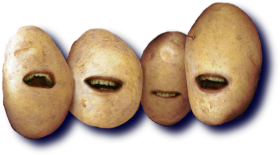

A little while ago, I sent in a bug report for some 3D software I use. On Wednesday night, I got an email from one of the programmers saying that he couldn't see the bug I was talking about; was it still happening in the most recent version?
I remembered that hidden on their site was a video tutorial showing how to create hair braids; they demonstrated the process by combining a "movie" of the screen with a narration of what was being done, which I thought was really effective.
I looked around for freeware programs to create such a video, and to my surprise found that Microsoft's Windows Media Encoder 9, which includes this capability, could be downloaded for free (because, of course, it only encodes to Microsoft's proprietary format). So I told WME to capture just the 3D app's window, demonstrated the bug as I explained where the problem was occurring, and sent it to the programmer — who then saw what I was talking about, and the bugfix should be in the next release. Hooray for technology! (And it was only 361K for 51 seconds of 567x549 video with sound, which I have to admit is pretty impressive.)
Unfortunately, the experience reminded me that I really hate my speaking voice (to my ears, I sound like a cross between Harold Ramis and David Schwimmer: nasal, yet weasel-like), and that I really suck at extemporaneous speaking (I re-recorded it several times until I didn't sound like a complete imbecile; maybe I should have written a script).
Worlds apart we walk, you and I.
Sid
Like Yoda sometimes speak, we do!
Which really sucks when you're putting rounded bevels on the edges of a mechanical or architectural model...
Interestingly, I also submitted what I thought was a bug in which bias values weren't properly reflected across the X axis in mirror mode, but:
Sorry but mirror mode and bias wasn't ever designed to work. That it did
anything at all was a bug.
Which seems kind of silly to me — why wouldn't you want the bias values to be reflected on the opposite side, if the whole point of mirror mode is to let you keep a symmetrical model?
Yeah, looking at your example png, I bet negation would work for the gamma...